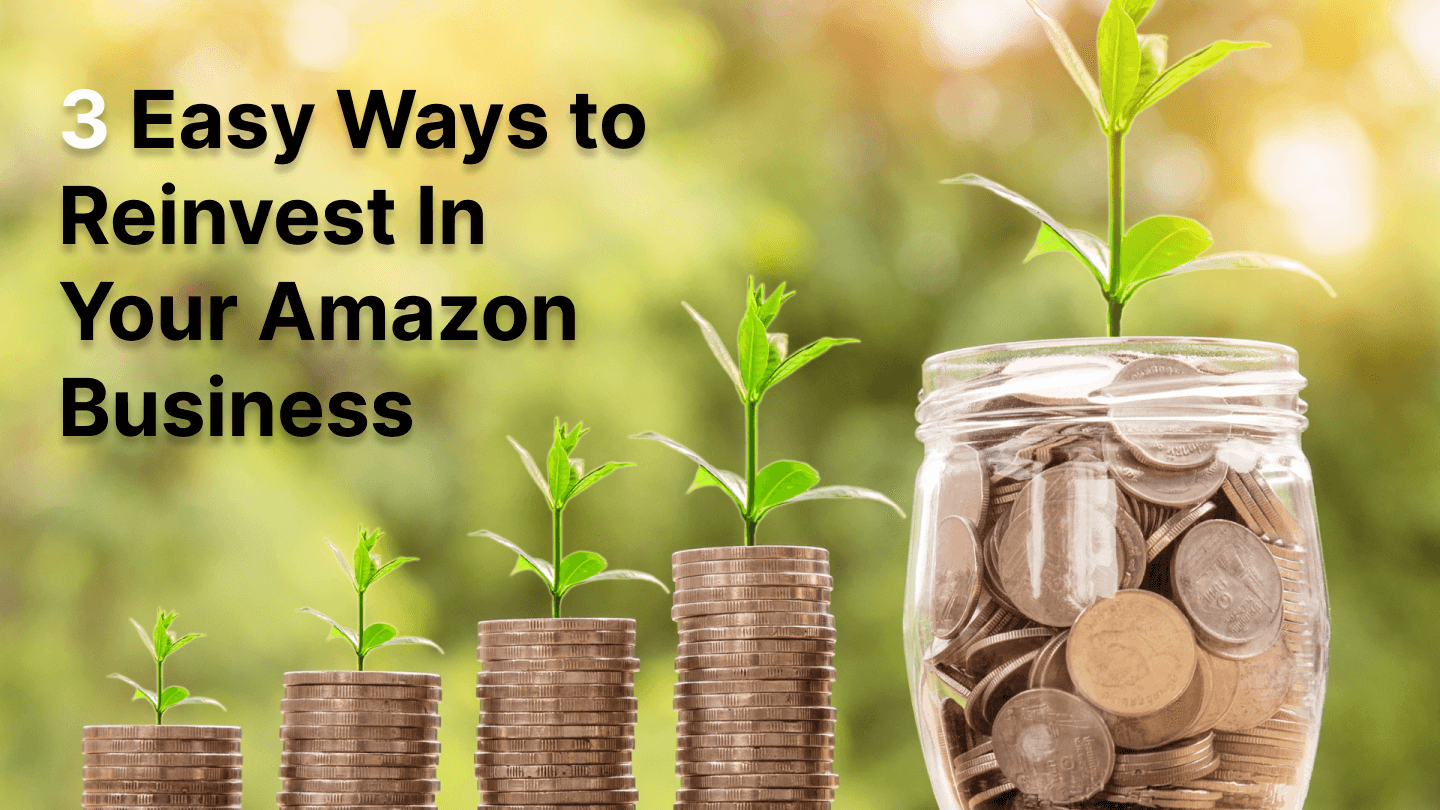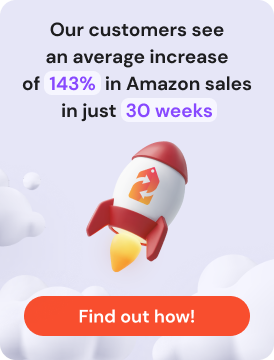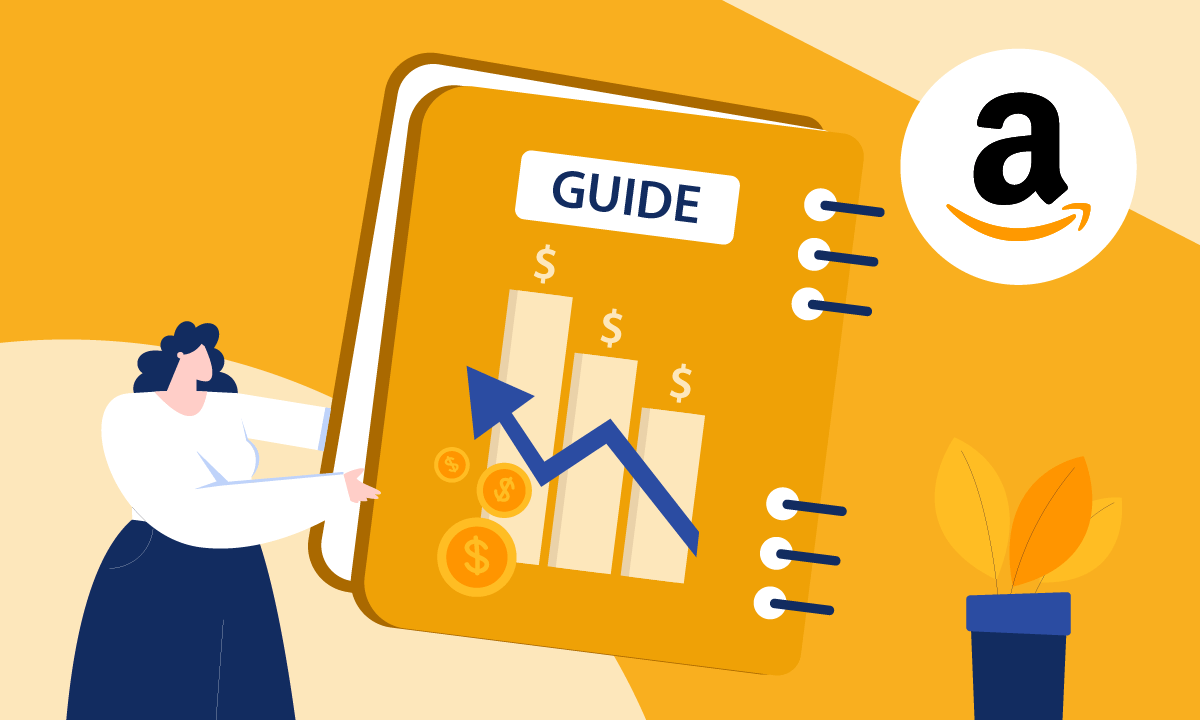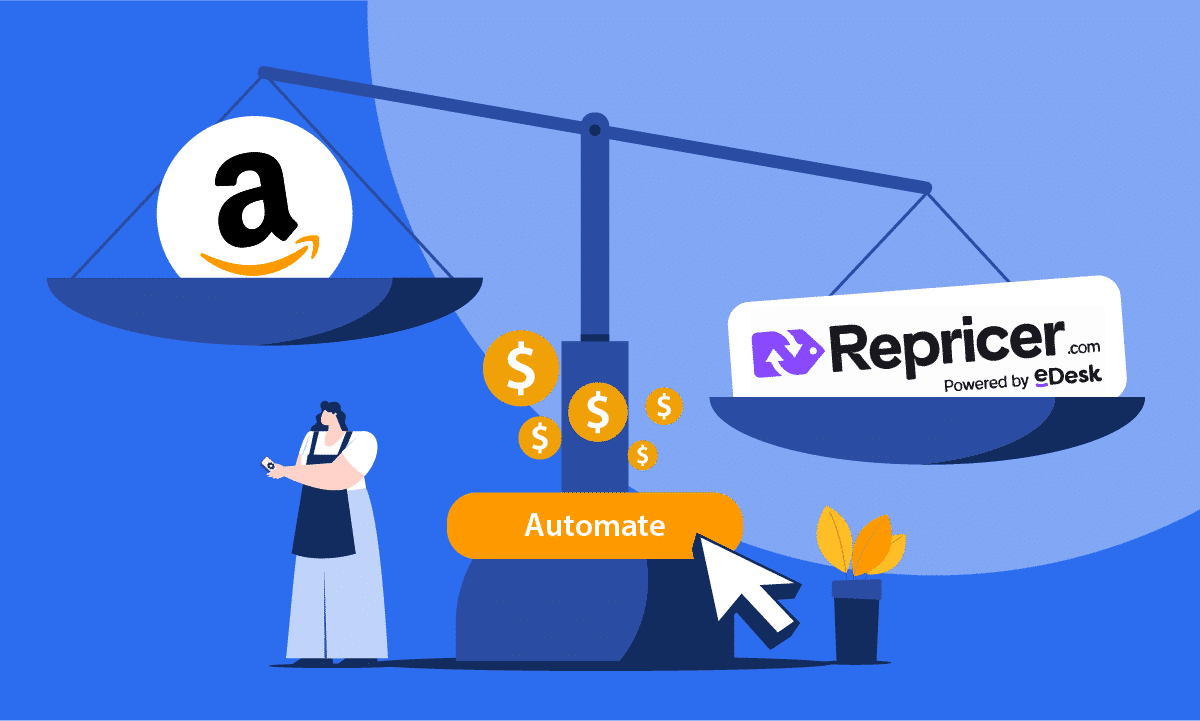Growth. That’s what you should be aiming for as an Amazon seller. But you’re always too busy, right? Right, but a wise and clever Amazon seller will find the time to nurture growth in their business. That means you.
It’s all about reinvesting, and it’s easy if you’re organized. So, here’s how to reinvest in your Amazon business, and when we say reinvest, we’re not just talking about money – it’s energy too. Think of your Amazon business as a reinvigoration station.
There is actually an ideal time to get growing. It’s the last quarter, or fourth quarter or Q4, of your financial year. This is a good period to choose because it tends to be busy and profitable and you’re likely to have some spare cash to put to good use in the future.
You should aim to take some of your profits and plough them back into your Amazon business.
It’s also a great time to take stock of the year that’s almost over. Now, this is key, because taking stock is all about where you’re at and what you’re doing and where you want your Amazon business to go.
Growth isn’t just about new stuff, it’s about optimizing what you have, what you’re selling, and making it better.
Let’s take a look at what you’ve got and give it a bit of a polish before gazing at pastures new.
Here’s our three-point plan for you.
1. Assess and improve your Amazon product portfolio and offering
Think of this like having a spring clean.
- Take a look at what you’re selling
- Consider what’s selling well and what isn’t and why
This might sound obvious, and you might think you know the answers already – but dig deeper.
The way to dig deeper when taking stock of what’s working and what isn’t is to lift your head up and look around your selling environment on Amazon. Sure, you’ve got your sales figures to go on, and probably more stats than you can cope with, but look at your customers and then look at your competition.
Have a closer look at what your customers have been saying about your products in their Amazon reviews. Also, what other feedback have you had? Gather all your customer’s comments together and look for opportunities to improve your proposition

Look at what customers are saying about your competition. What can you learn from what they’re saying, good and bad? Are there any opportunities there for you?
These opportunities might not be obvious, but they are there, and you’ve just got to find them.
Let’s make this clearer with some examples:
Remember that lady in June who got in touch asking if you sold your bedroom slippers in green? You said no, unfortunately not.
But hang on, didn’t someone else ask the same thing a couple of weeks later?
You didn’t do anything at the time; you were too busy. But there could be something here. Consider having a green version of your slippers in stock in time for next season.
Have a look at your Amazon marketplace. Is anyone else doing anything similar? Don’t be put off if they are because you’re an established and successful brand, and you can give them a good run for their money – even more so if you’re winning the Amazon Buy Box with tools like Repricer managing your pricing for you.
Why not consider some matching bed socks in the same green colour too? In fact, why not sell them in a bundle? That will squash the competition, and bundles are easy for you to do if you’re a Fulfillment by Amazon (FBA) seller.
Here’s another example! Remember that guy who wrote a review that he liked your dark wooden picture frame on his mantlepiece and how the picture of his wife in it looked so lovely by candlelight?
We aren’t necessarily saying that you should start selling those picture frames in a candle-frame bundle, but it’s worth looking at your Amazon listing again as there could be something in this.
Is it worth creating content about the atmosphere and how your frames look so lovely in candlelight? You will be setting the scene and describing the ambience.
Now, how about the photography you’re using? Why not refresh your images and introduce a couple of pictures with a bit of that atmosphere? A photo of one of your frames on a mantlepiece in candlelight would work in this context.
You must look at all aspects of your existing Amazon product portfolio and related listings and look for ways to improve on what you’ve got and how you’re selling.
Polish and tweak your Amazon listing, including looking to improve your SEO and see if you can improve the quality and content of your photography.
All this spring cleaning will cost money if you’re going to do it properly, but it’s an excellent cause to reinvest in. And remember, good work in this department will strengthen your brand, and strengthening your brand means more revenue.
Finally, part of your audit should be to look to rekindle or re-push any of your less successful products. Only you know your products and can make that decision, but you should decide whether a slow-moving product is worth continuing to stock – or replace it with a better seller!
2. Launch a new product
This one is a little more tricky, but you’ve been here before. Remember when you first started?
You will have learned a lot since then, and launching something new will likely be less stressful this time. It’s often wonderful going back to product ideas after a time gap.
Some of your old ideas will probably embarrass you, and you’ll shyly put a line through them, but some will stop you in your tracks.
Now, take a walk and think quietly about this new product.
- Does it fit your current Amazon product portfolio?
- Does it need to?
- Will your idea for a new product fit comfortably under your existing brand, or will you have to create a new one?
Starting a whole new Amazon product line or offering that doesn’t relate to your existing Amazon-branded business will be like starting afresh, and strictly speaking, is a new investment, so consider it carefully.
When you find the new product that fits, there are ten things to tick off:
1. If you have an existing customer database or followers on social media channels, consider reaching out to them and doing some research. You don’t have to sweat the detail and give too much away. Don’t overthink it, and keep it simple. Direct questions are best: “Would you consider buying a pair of green matching socks with some green bedroom slippers?”
Remember, people love being asked their opinion, and the chances are they’ll be up for helping you because they’re either past customers or following your brand for a positive reason.
2. Look at your new product and draft its listing – the bullets, the description, the A-plus content – and see what content you can use and tweak from your existing product portfolio.
3. When you’ve got your first draft, consider the synergy between your existing and new products. Are there any bridges you can build? Look for commonalities and areas where you might be able to cross-sell or up-sell.
Once you’ve done this, revisit the content draft for your new product and adjust the content to build in your cross-sell and up-sell opportunities.
4. Now you have your first draft, rework it again to search engine optimise it with relevant keywords. Keep an eye on benefits to the customer when you do this. Remember, your listing isn’t just about your brand and new product. It’s about your customer and how it can help and benefit them.
5. Be strict with yourself, and don’t compromise on photography. If you take the photographs, do you think they’re as good as those a professional photographer could shoot for you? If not, hire a photographer to take the pictures for you.

Make sure you brief your photographer well. Beyond the static shots showing the features of your new product on a white background, include an infographic showing weight, size and other specifications. Remember to ask for some atmospheric shots that show your product ‘in action’ and being used in a real-life environment.
If your new product is a green scarf, show someone wearing it, maybe someone putting it on. This will help customers imagine themselves using the scarf in their life.
6. Once you have your optimised and interesting content for your new product. You have your excellent and compelling photography, then incorporate your new product into your Amazon storefront.
7. When your new product listing is live, analyse pricing in the market alongside your competition and adjust your pricing and its positioning against the competition using tools like Helium10 or Repricer.
8. Now tell your world – and by that, we mean marketing to your social media followers and existing customers – about your new product. Remember to be relaxed, engaging and inclusive in your messaging, linking them to your new product listing on Amazon.
These messages will give you an excellent opportunity to offer a promo or discount to engage people and encourage them to buy.
Note: you might want to consider sending your click-throughs to a landing page rather than directly to your Amazon listing. You might be able to capture some customer details on this landing page to grow your database.
9. Once your new product is up and running, you can consider outsourcing the day-to-day monitoring and management of your new product on Amazon to an Amazon consultant. This will free you up to concentrate on your brand and marketing.
10. Now you’ve got to the clever bit. Don’t leave off the thinking. Once you have reinvested in your Amazon business by improving your existing products or introducing a new product, take time to invest the remaining profits in future promotional strategies.
Think way ahead, think seasonally, and think about the key dates when selling your green socks or scarf would be a good time. For example, green and Christmas, a gift for Mother’s Day, or a graduation present. Diarise all these, making notes while everything is fresh in your mind, so you have a plan to return when the time comes.
3. Engage, engage, engage
Many Amazon sellers leave this important continuity element out, feeling that they’ve done their bit getting their new product to market. But now is the time to push yourself and your new product further.
Reach out to bloggers and influencers, share content about your new product and offer them promos they can then share with their audiences.Generate ongoing content on your social media channels to keep your new product in people’s minds throughout the year. It sounds like a big task, but you can always reinvest some of your profits into hiring a freelance writer and photographer to produce content for you.
Final Thoughts
In a short time, you will help yourself grow and scale your Amazon business. Whether introducing a new variation to your existing Amazon product portfolio or introducing a new product altogether, you will show grit and determination in reinvesting some of your profit into your Amazon business.





